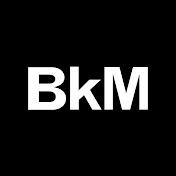
Cartonnage Funerary Assembly
305-30 B.C.E.
Maker Unknown
Egyptian, Classical, Ancient Near Eastern Art
In the Ptolemaic Period, separate cartonnage pieces replaced the full-body cartonnage covering such as the one used with the Mummy of the Priest, Hor nearby. Yet the same series of symbols were used, such as the scarab beetle (a symbol of rebirth), the Four Sons of Horus, Anubis, sun disks, and gold leaf (a reference to the gods, who were believed to have gold skin).
The lower part of the inscription shows a number of dots marking the place where the owner’s name would be filled in, indicating that such objects were mass-produced for the market. The use of gold in prefabricated funeral equipment suggests a large, wealthy population in Ptolemaic Egypt eager for such products.
The lower part of the inscription shows a number of dots marking the place where the owner’s name would be filled in, indicating that such objects were mass-produced for the market. The use of gold in prefabricated funeral equipment suggests a large, wealthy population in Ptolemaic Egypt eager for such products.
- Maker/Artist
- Maker Unknown
- Classification
- Funerary Object
- Formatted Medium
- Cartonnage, pigment, gold leaf
- Medium
- cartonnage, pigment, gold, leaf
- Locations
- Place found: Egypt, Place excavated: Abydos, Egypt
- Dimensions
- Fragment a: 13 9/16 x 10 1/4 in. (34.5 x 26 cm) Fragment b: 9 1/16 x 14 3/4 in. (23 x 37.5 cm) Fragment c: 5 1/2 x 12 3/16 in. (14 x 31 cm) Fragment d: 5 5/8 x 13 3/4 in. (14.3 x 35 cm) Fragment e: 6 3/8 x 18 7/8 in. (16.2 x 48 cm) Fragment f: 6 15/16 x 9 1/16 in. (17.7 x 23 cm) 7 x 7 x 9 in. (17.8 x 17.8 x 22.9 cm)
- Accession Number
- 12.911.2a-f
- Credit Line
- Gift of the Egypt Exploration Society
- Exhibitions
- Egypt Reborn: Art for Eternity, Ancient Egyptian Art
- Rights Statement
- Creative Commons-BY
Have a concern, a correction, or something to add?












